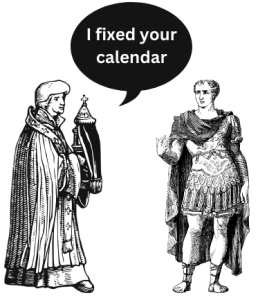
Like clockwork another four years have passed and an additional day has magically appeared in February. But where does this additional day actually come from? Well the answer is a bit complicated.
If asked how much time is in a year most people will say 365 days without hesitation. However in terms of how long it takes the Earth to orbit the sun, a full rotation takes 365 days, 5 hours, 48 minutes and 56 seconds. While that extra time may seem insignificant it adds up drastically after a while.
If the calendar year was 165 days permanently then after about 700 years the seasons wouldn’t align with the calendar. Instead of summer being in June it would drift all the way to December. So since the extra time it takes Earth to complete its orbit comes out to a little less than six hours, adding an extra day into the calendar every four years means the leftover time adds up to be a full 24 hour day.
Well “full” is a stretch. There’s still a few precious fractions of a second that end up unaccounted for. In 46 BC, Julius Caesar created the Julian calendar which employed this concept, however by 1582 the calendar had drifted by about ten days.
So the Pope at the time, Pope Gregory Xlll actually deleted ten days from the calendar that year. The people of 1582 went from October 4 straight to October 15. Then September 1752 the Gregorian calendar (the one we use today) was officially introduced. The Gregorian calendar is exactly the same as the Julian calendar except instead of adding an extra day every four years without exception, it skips century years that aren’t divisible by 400. So while 2000 and 1200 were leap years, 1900, 1800 and 1700 were not. The upcoming 2100 will also not be a leap year.
This system still isn’t perfect though, as the calendar year ends up being off the Earth’s rotation by 26 seconds. Have no fear though. The calendar only drifts by a day once every 3,333 years compared to the Julian calendar’s 129 years.
Maybe one day a system will be discovered that makes the calendar match up with the Earth’s rotation perfectly. Until then those born on February 29 can look forward to living four times as long.






